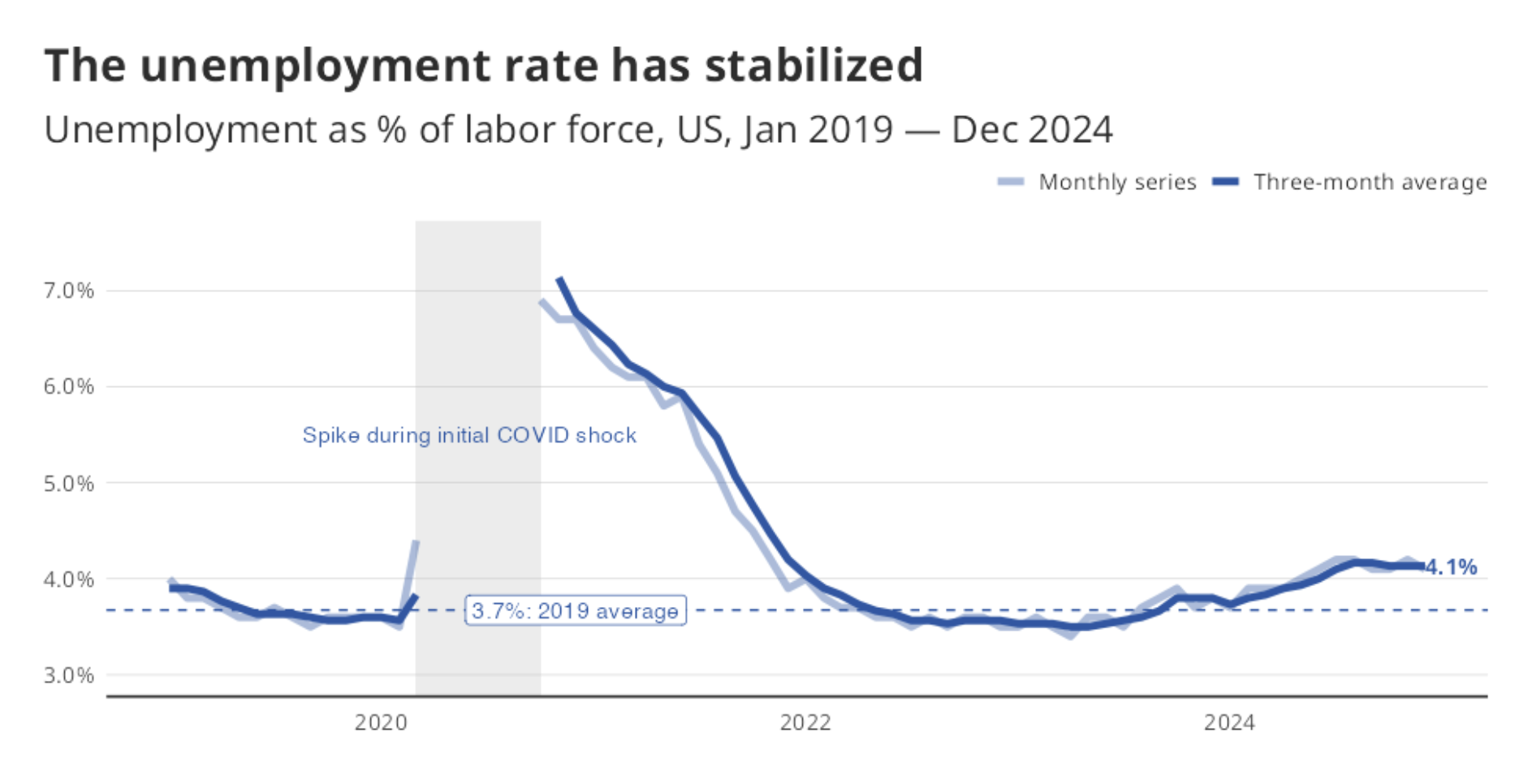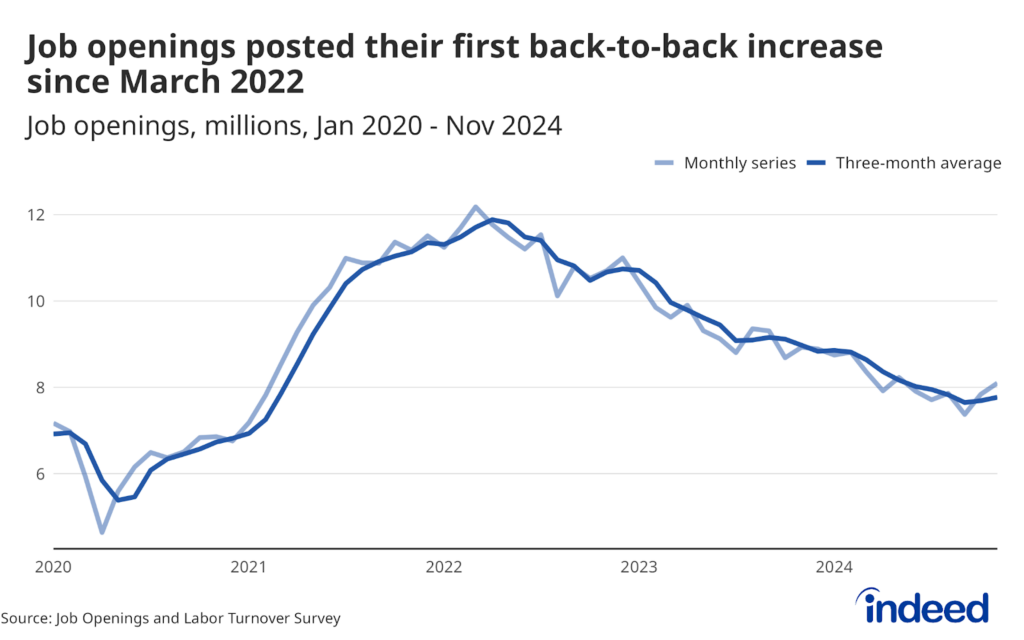The final jobs report for 2024 reveals a labor market that has maintained momentum heading into the new year. Reflecting on 2024, the labor market can be seen as a tale of two halves: the year began with challenges marked by upticks in unemployment and slowing job growth, followed by a steady rebound that reinforced the market’s resilience. In the latter half of 2024, signs of stabilization began to surface as many key metrics leveled off, signaling a possible beginning of equilibrium.
Today’s report shows that the unemployment rate edged down to 4.1%, remaining relatively stable over the last six months. Job gains remain healthy, with employers adding an average of 170,000 jobs per month since October. The diffusion index for December registered at 56.4, a sign that a majority of industries experienced at least some job growth in December, though gains were largely concentrated in healthcare & social assistance, leisure & hospitality, and government. The share of prime-age workers with a job ticked up slightly in December, from 80.4% to 80.5%, but the trend over recent months has been more subdued.
Looking back, the monthly job growth trend in 2024 was mostly a continuation of 2023’s gradual cooling pattern, punctuated by a few unexpected bright spots. Employers added roughly 2.6 million jobs since last December—a slowdown from the 3 million jobs gained between December 2022 and December 2023 but still outpacing the 2 million jobs added from 2018 to 2019. While job gains are more moderate now than a few years ago, they still exceed the approximate 100,000-job clip needed to keep up with population growth—an encouraging sign of resilience.
However, 2024 wasn’t without its challenges as some concerning trends emerged from the household survey. The unemployment rate caused a lot of concern in the first half of the year, rising from 3.7% in January to 4.2% in July, but the rate appears to have stabilized over the last six months which is encouraging. Still, prime-age labor force participation growth has leveled off and looks dangerously close to reversing its multi-year increasing trend.
Today’s report confirms that tailwinds continue to propel the labor market forward despite continued cooling in 2024. A fuller picture of 2024’s labor market will come into sharper focus as payroll revisions are released next month. However, household survey data will not be revised, and signs of stabilization there are encouraging as we begin 2025. As we turn our attention to the new year, many questions remain about the impact of potential policies from the incoming presidential administration and whether the labor market has enough steam left to nail a soft landing. For now, today’s data are likely to reinforce the Federal Reserve’s confidence that the labor market still has solid momentum and that they have room to wait on interest rate-cutting decisions.


